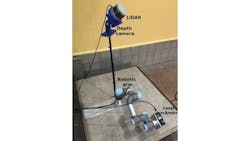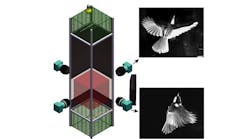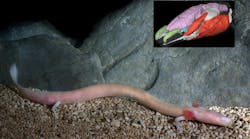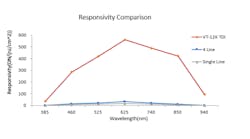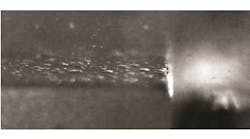Researchers at Drexel University College of Engineering have developed an AI-enabled machine vision method for inspecting reinforced concrete structures.
The goal is to enable efficient identification of hairline cracks and other defects.
Their method combines a camera for crack detection, laser scanner to measure the shape of cracks, and LiDAR to collect point cloud information on the environment surrounding the cracks.
The researchers published an article summarizing their work in Automation in Construction (bit.ly/4ansT10).
Given the vast size and sheer number of concrete structures—such as bridges, roads, and tunnels— and the relatively small size of cracks and other defects, collecting high-resolution images of every square inch of a structure is impractical. This is true even with automated machine vision methods, the authors explain.
Instead, they propose an approach in which they analyze RGBD images of a structure using a convolutional neural network (CNN) to identify cracks and defects—or regions of interest. They then use a laser scanner attached to a robotic arm to produce detailed information on only the problem areas of a structure.
This approach “significantly reduces unnecessary data collection from areas that are in good structural condition while still providing comprehensive and reliable data necessary for condition assessment,” the authors wrote.
Related: A New Way to Discover a Reaction that Causes Cracks in Concrete
Machine Vision Inspection of Concrete
The researchers tested their process using a concrete specimen (122 x 122 x 16 cm) with cracks and other defects. During the test, the system accurately detected and measured a crack with varying widths of 0.02 to 0.5 mm. The resolution of the scan was 0.004 mm when the laser scanner was pointed perpendicularly to the crack.
Here’s how their process worked:
- A D455 RGB Realsense depth camera from Intel (Santa Clara, CA, USA) collected images of a concrete structure including depth information.
- The RGBD images were converted to grayscale and processed by a CNN to find cracks and draw bounding boxes around them. Depth information was used to convert 2D bounding boxes into 3D coordinates of the cracks.
- A laser profiler (LI-X8060) from Keyence (Itasca, IL, USA), mounted on Ur3 robotic arm from Universal Robots (Odense, Denmark), created detailed 3D image of the damaged area. The laser line scanner provided a resolution of 3200 scans in 15 millimeters, capturing the width and shape of the cracks and defects.
- A Puck LITE LiDAR sensor from Velodyne (San Jose, CA, USA) generated a point cloud of the surrounding environment.
The researchers fused the point cloud of the environment with the point cloud of the crack to create a 3D map, or digital twin, with information about location, width, and shape of cracks.
Related: How Smart Cameras Are Used in Digital Twin Platforms
“Tracking crack growth is one of the advantages of producing a digital twin model. In addition, it allows bridge owners to have a better understanding of the condition of their bridge and plan maintenance and repair,” says Ali Ghadimzadeh Alamdari, a research assistant in Drexel’s College of Engineering.
The authors plan to pursue additional research projects incorporating the multi-scale inspection system. As Arvin Ebrahimkhanlou, another study author and assistant professor in Drexel University’s College of Engineering, explains, “Currently, we are exploring three directions to advance this research: 1) integrating our work with virtual reality, 2) advancing our artificial intelligence algorithms, and 3) using more advanced robotic hardware, e.g., mounting our robotic arm on an unmanned ground vehicle.”
